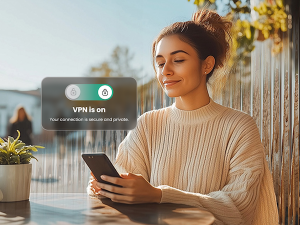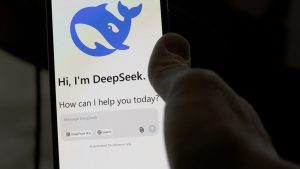One of the positive trends that we’ve seen in recent years is governments and users pressuring companies to simplify their privacy policies and security settings. This comes after a slew of concerning incidents, such as widespread data breaches and data sharing by social media companies.
The spotlight on these issues is beginning to take effect, as Facebook’s latest “Access Your Information” tool shows, and users are feeling more empowered. Furthermore, in November 2020, Californians voted in favor of the new California Privacy Rights Act to strengthen privacy protections for consumers. This is also reinforced by more and more states and countries considering or debating the introduction of comprehensive privacy legislation.
In fact, a recent study found that 71% of respondents checked their social media platform’s advanced privacy settings when they joined. This is great progress, but we can do more. We know from our research that only 39% of users make sure the site or service they’re using is legitimate, and a mere 12% use a dark web monitoring service. This year’s International Data Privacy Day, January 28th, is the perfect opportunity to make sure that your sensitive information stays as safe as possible.
The data we are looking to protect, known as Personal Data or Personally Identifiable Information (PII), can be anything that relates to your identity. And although many technology users feel that protecting this information is beyond their control, we actually have a lot of simple and effective ways to safeguard our PII. So, let’s start this new year by owning our privacy with a closer look at our social media accounts.
After all, we take pains to safeguard our finances, and the personal data we share on social channels is similar: it has value, and it’s up to us to make sure we take the right steps to keep it protected. Security tools like antivirus software and password managers help enormously in boosting our overall security, but when it comes to social media in particular it’s essential to know what kind of data we’re generating, and how it is used and shared.
First we need to recognize that where we click, “like” and login, all leave a digital footprint that can be used to reveal more about your identity and habits than you would think. For example, just using Facebook, Amazon, or Google to login to third-party sites generates an enormous amount of information about where you go and what you do. Many users choose this route because it is easier than creating and remembering passwords to each individual site.
Another way your data gets scattered around is through sharing—whether you intentionally post on social media sites, or use a website, app, or service that permits third-party access of user information. Many users unwittingly agree to this access because it’s buried somewhere in a thick privacy policy.
Now that we know a little more about how your PII gets out, let’s learn how to protect it.
Here are a few tips to own your privacy:
Avoid oversharing—When it comes to social media accounts, set them to share with “friends only.” This should give you some control, but it’s also important to realize that your photos and data can still travel beyond your immediate network, so our best advice is not to post anything you wouldn’t want a future boss to see, for example.
For your other sensitive accounts, check to see which information is being shared, and with whom. If you’re not comfortable with the terms, you can decide to opt out, or close your account.
Check for linked logins—If you use your Facebook or Google login credentials to log in to other accounts, it’s a good idea to revise the list of sites that have access to your information and pare it down. In many cases you may have visited a site just once, and there is no reason for the third-party site to hold onto your data. Delete the linked information by visiting the website you used to login in the first place, and create unique login credentials for the sites you visit frequently.
Keep a careful eye on your apps—Mobile apps have become a key vector for hackers, so you want to make sure that you only download and install apps from reputable providers that have positive reviews.
For the apps that are already on on your phone or tablet, check the security settings to see if they are accessing more information than they need to work properly. For instance, a mapping app needs your exact physical location, but a gaming app may not. McAfee® Mobile Security can safeguard your devices from malicious files, and help prevent you from oversharing data with apps.
Lose what you don’t use—If you have accounts for apps or services that you no longer use, it’s time to get rid of them. This prevents them from potentially leaking your information in the future. Just remember that deleting an app doesn’t mean that your data is deleted. For that, you’ll need to close your account.
For the apps you want to keep, make sure they are updated, since updates often contain security fixes. You may also want to recheck the settings to ensure that your data is only being shared if you explicitly allow it.
Let tech tools help—Of course, I always recommend that you download security software, and a holistic solution like McAfee Total Protection includes dedicated privacy tools, like a virtual private network (VPN), which scrambles your data while it flows over the network, ensuring that no one else can see it. It also includes safe browsing tools to keep you safer from malicious sites and downloads, and dark web monitoring to help you keep tabs on your personal data.
McAfee also recently released a personal protection app (in beta) that monitors the dark web to see if your login credentials have been leaked. If so, it alerts you, so you can change your passwords immediately. It also includes a VPN.
Be careful where you click—Even the most savvy users can still accidentally click on a dangerous link, so consider using the free McAfee® WebAdvisor to alert you to risky links and downloads that may be hiding in your newsfeeds and timelines, before you click on them.
Stay aware of the latest scams—Part of owning your privacy includes staying informed about the latest threats. These blogs are a great resource.
This Data Privacy Day make a resolution to take back control of your personal information, and help others do the same. For more information visit the National Cyber Security Alliance.











